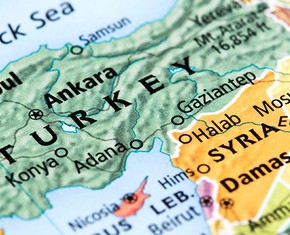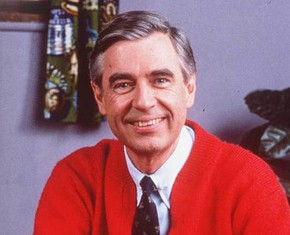The views expressed in our content reflect individual perspectives and do not represent the authoritative views of the Baha'i Faith.
Many religious leaders have grown to think that the importance of religion lies mainly in the adherence to a collection of certain dogmas and the practice of rites and ceremonies! Those whose souls they profess to cure are taught to believe likewise, and these cling tenaciously to the outward forms, confusing them with the inward truth.
Now, these forms and rituals differ in the various churches and amongst the different sects, and even contradict one another; giving rise to discord, hatred, and disunion. The outcome of all this dissension is the belief of many cultured men that religion and science are contradictory terms, that religion needs no powers of reflection, and should in no wise be regulated by science, but must of necessity be opposed, the one to the other. The unfortunate effect of this is that science has drifted apart from religion, and religion has become a mere blind and more or less apathetic following of the precepts of certain religious teachers, who insist on their own favourite dogmas being accepted even when they are contrary to science. This is foolishness, for it is quite evident that science is the light, and, being so, religion truly so-called does not oppose knowledge. – Abdu’l-Baha, Paris Talks, pp. 144-145.

Portrait of Christopher Columbus.
In grade school, I learned that “everyone” believed the Earth was flat until the brave Christopher Columbus (aka Cristobal Colon) argued the point with Isabella and Ferdinand and sailed off to the west, proving the planet to be a globe. Hence, Columbus Day.
A whole host of reasons point out why we shouldn’t celebrate Columbus Day (some of which my eldest daughter outlined emphatically in a fifth grade essay). One of them: that whole flat Earth thing is a myth.
How do we know this? Because people during the Middle Ages wrote about such things and left us a record of their thoughts. Scholarship new and old tells us that, no, people living in the Middle Ages did not, as a rule, believe the world was flat. So, why do so many of us think they did?
You might be surprised to learn that the idea of Columbus’ “discovery” of the Americas, and his insistence that the world was a globe ushered in the age of modernity, both came from storyteller Washington Irving (of Rip van Winkle fame) in his popular 1828 book The Life and Voyages of Christopher Columbus. Some years later, polemicist John Draper expressed the myth this way:
. . . the question of the shape of the earth was finally settled by three sailors, Columbus, da Gama and, above all, Ferdinand Magellan. – History of the Conflict Between Religion and Science, 1874
But Columbus and his colleagues did not prove the world was a sphere for the simple reason that most Europeans (and Arabs, for that matter) already knew it was. His argument with the crowned heads of Spain was about the size of the planet, not its shape. This comes directly from the reports of his son, Fernando Colon; and Bartolome de las Casas, a priest who wrote a history of the New World. Nor was Columbus a rogue thinker out to prove a point. He was a devout Catholic who thought he was doing God’s work by finding a passage to India and providing the Church and Crown with riches galore. This, according to his diaries and logs, some of which I’ve read (and included in my alternate history novelette “O, Pioneer”, which you can download for free, here).
Remember those universities I mentioned in the last installment in this series of essays? Those universities left records of what they taught, and they taught Aristotle—including his mathematical proof of the sphericity of the world. Moreover, the list of major natural philosophers whose work supports a spherical earth is both long and illustrious, including Ambrose (d. 420), Augustine (d. 430), Aquinus (d. 1274), Bacon (d. 1294), and Magnus (d. 1280). Two standouts of the 13th and 14th centuries were Jean de Sacrobosco and Pierre D’Ailly, archbishop of Cambrai (d. 1410). Sacrobosco’s book De Sphera, which demonstrated the sphericity of the Earth, was used as a textbook in the afore-mentioned universities throughout the Middle Ages. D’Ailly wrote a book, too, entitled Imago Mundi, which discussed the spherical shape of the planet
Only one or two renowned thinkers deviated from this opinion. One Lactantius (4th c.) opined that all pagan learning distracted from man’s rightful study, which was his salvation. Another, whose views were just ambiguous enough to fuel the science and religion “controversy,” was the 5th-6th century encyclopedist, Isadore of Seville. A statement in his De Natura Rerum, which draws criticism from writers like Draper, maintained that people all over the world experienced the size and heat of the sun in the same manner. Some modern critics have taken this to mean that Isadore believed the Earth was disc-shaped. Other scholars note that it might also be a reference to the fact that the Sun does not appear to change shape as it “moves” through the heavens. These same scholars point out that among Isadore’s works of physics and astronomy are concepts that are consistent with, and even dependent upon, a spherical world.
In any event, thinkers like Lactantius and Isadore form a tiny minority. Their presence suggests to modern scholars—such as Lesley B. Cormack, Dean of Social Sciences at Simon Fraser University—that the record of such views “merely indicates that the early-medieval scholarly climate was open to debates on the subject” (Galileo Goes to Jail, p. 33). According to Professor Cormack, only one medieval scholar is known “explicitly to deny the sphericity of the earth.” That was Cosmas Indicopleustes—a Byzantine monk who developed a scripturally based cosmological model that featured Earth as a table-land.
Now that’s the sort of Earth Chris Columbus’s sailors might be excused for fearing they’d fall off the edge of—except that they did not, in fact, express any such fear. According to Columbus’s logs, his men’s biggest complaints were that the trip was taking longer than the Admiral of the Seas had promised, and that because the wind seemed always to blow to the west, they might not be able to sail east on their return trip.
Oh, yeah, and there was never enough grog.
Next: Islam and Science Redux
You May Also Like
Comments

















So the surface looks flat, but is actually curved around the earth. The curvature is so small and gradual that we can't see it when looking at the water.
However, you can see ships sailing over the horizon, that's been noticed for thousands of years (humans have noticed the Earth isn't flat for thousands of years). Where does the ship go if the water is flat? is it sinking? Or, is the surface of the water ...curved, and the ship is going along the curve until you can't see it anymore?